"The diversity of the phenomena of nature is so great, and the treasures hidden in the heavens so rich, precisely in order that the human mind shall never be lacking in fresh nourishment." -Johannes Kepler
So said the man who, in 1604, discovered the supernova that was the last to be seen, visually, within our own galaxy. Although it's likely that two others occurred subsequently, they were not visible to human eyes, and only with powerful telescopes were their remnants discovered.
But earlier this week, the first supernova of the year was discovered, in a galaxy 25 million light years away, NGC 3239. The supernova, indicated below, is now known as SN 2012a.
With a typical rate of about one supernova per galaxy per century, one can't help but wonder, as one of our perennial commenters did, what we'd see -- and how quickly we'd manage to see it -- if a supernova went off in our own galaxy.
Remember, now, there are two ways we can have a supernova, but both ways involve a runaway nuclear fusion reaction, giving off a tremendous amount of light and energy. But most of the energy, perhaps surprisingly, isn't in the form of light! Let's take you inside a star that goes supernova during those critical few seconds.
Although there are shocks and heat that are produced, you'll see that the interior reactions produce neutrinos, nearly all of which do not interact with the outer layers of the star! A few of them do, as do all of the protons, neutrons and electrons produced, and the overall production isn't instantaneous. But while it takes some time -- a couple of hours -- for the shock to reach the outer surface of the dying star, the neutrinos make it out almost immediately!
What this means is that when we have a star go supernova, neutrinos get emitted from it before the light does! We actually discovered this, firsthand, back in 1987.
When supernova 1987a went off just 168,000 light years away, it was close enough -- and we had enough neutrino detectors operating -- that we detected 23 (anti)neutrinos over a timespan of about 13 seconds. The largest detector, Kamiokande-II, contained 3,000 tons of water and detected 11 antineutrinos.
Today, the detector that sits in the same spot, Super Kamiokande-III, contains 50,000 tons of water and contains over 11,000 photomultiplier tubes. (There are many other excellent neutrino detectors around the world, but I'm focusing on this one in particular as an example.)
This setup is so amazing because it can not only detect neutrinos, but it can reconstruct the direction, energy, and point-of-interaction of even a single neutrino fortunate enough to interact with any one particle in those 50,000 tons of water!
Depending on where a potential supernova goes off in our galaxy, we would expect Super Kamiokande-III to see anywhere from a few thousand antineutrinos (for something on the other side of the galaxy) to over ten million of them, all in the timespan of just 10-15 seconds!
Neutrino detectors from all over the world would see a flood of detections like this, all at the same time, all coming from the same direction. At that point, we'd have something on the order of two-to-three hours to identify the direction of origin of those neutrinos, and point our telescopes towards that direction to try and obtain an optical view of the supernova -- for the very first time -- from its very beginning!
The closest supernova since 1987 was this one from last year, which we managed to catch just half a day after ignition, which is remarkable.
We've gotten very close -- mostly by good fortune -- with a very intense hypernova back in 2002.
Even so, we didn't get to first observe this one, SN 2002ap, until 3-4 hours after first ignition. If the supernova that eventually comes is a type Ia supernova -- which originates from a white dwarf -- we have no way of predicting where in the galaxy that will occur. White dwarfs are simply too abundant, and the locations of almost all of them are simply unknown, and thought to be distributed all over the galaxy.
But if this originates from a very massive star whose core collapses under its own gravity (i.e., a type II supernova), we have a number of really good candidates, and some outstanding places to look.
Most obvious is the galactic center, the location of the Milky Way's last known supernova, and also the location of the most massive stars ever discovered within our galaxy. We're certainly going to have many type II supernovae originating here over the next 100,000 years, but we have no way of knowing when we'll see the next one. As you look at the above picture, take a moment to appreciate that it's very likely already happened, and we're just waiting for the neutrinos (and then the light) to get here!
But there are closer candidates than the galactic center.
Look inside one of the great, star forming nebulae in our galaxy, and you're going to find some of the hottest, youngest stars you're going to find anywhere in the Universe. This is where the ultra-massive stars live, and in particular, the Eagle Nebula, above, may be home to an extremely recent supernova. The Eagle Nebula, the Orion Nebula, and many other regions filled with new stars are all great places to anticipate the next supernova.
But what about known, individual stars? While there are many good candidates, we have two in particular that we can't help but talk about.
Eta Carinae, in the very last stages of its life, could literally go supernova at any second. But it may also live hundreds, thousands, or even tens of thousands more years before it does so. Still, if we get a flood of antineutrinos originating from anywhere near its position in space, this will be the very first place we point our telescopes!
But unlike all of these candidates that are many thousands of light-years away, we have one good one that's much closer. In fact, it's the closest supernova candidate we have!
Say hello to Betelgeuse, a red supergiant just 640 light-years distant. Betelgeuse is so gigantic that it literally is the diameter of Saturn's orbit around the Sun! If Betelgeuse went supernova, our neutrino detectors around the globe would detect -- all told -- somewhere in the vicinity of a hundred million (anti)neutrinos, which is more neutrinos of any type than have ever been detected in the history of the world, combined.
But unless it's one of these known candidates that goes supernova, how will we tell whether it's a type Ia or a type II supernova?
We can always wait, I suppose. Supernovae of different types have very distinct light-curves, and how the light dies off after it's reached its peak brightness will tell us what type of supernova we had.
But if something this exciting happens, I'm not going to have that kind of patience. Luckily, I won't need it, because a supernova within our galaxy would likely be the very first detectable observation for the newest type of astronomy: Gravitational-Wave Astronomy!
Undisturbed by the presence of, well, anything, gravitational waves from a supernova explosion should pass through the intervening star, any gas, dust, or matter completely undisturbed, arriving at the same time the front end of the (anti)neutrino pulse arrives! The wonderful thing is that -- according to our best simulations of general relativity -- type II (core-collapse) and type Ia (inspiraling white dwarfs) should give vast different signals for gravitational waves!
If we have a type Ia supernova, we expect to see three separate regions to our signal.
The inspiral phase should give a periodic pulse that increases in frequency and magnitude as the white dwarfs reach their final stage of their separation. As the ignition occurs, there should be a spike in the signal, followed by a "ringdown" phase as the ripples go away. Very distinctive.
But if we have a type II supernova, from a super-massive collapsing star, we're only going to see two interesting things.
Just a huge spike -- where the supernova itself occurs -- just a tenth of a second after the core collapses, followed by a very rapidly dying (within 0.02 seconds) ringdown. And so if we want to know what we saw, all we need to do is extract the telltale signal from gravitational waves!
And if the galaxy's next supernova were to happen today, this is what we'd see!
- Log in to post comments


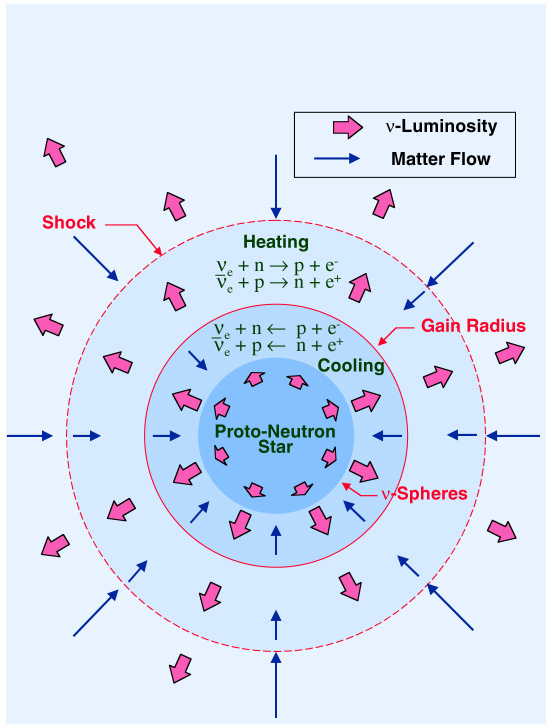
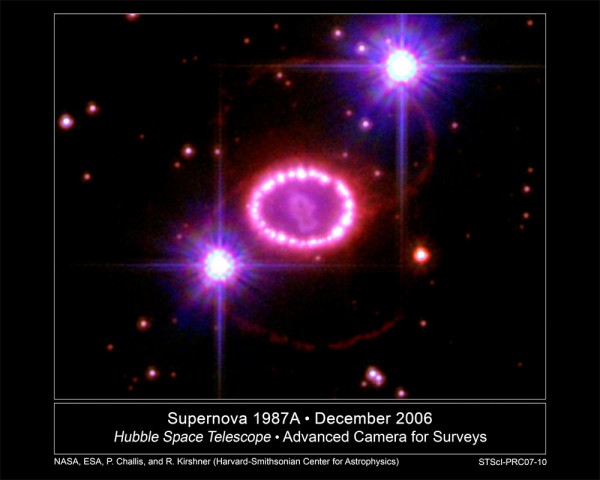
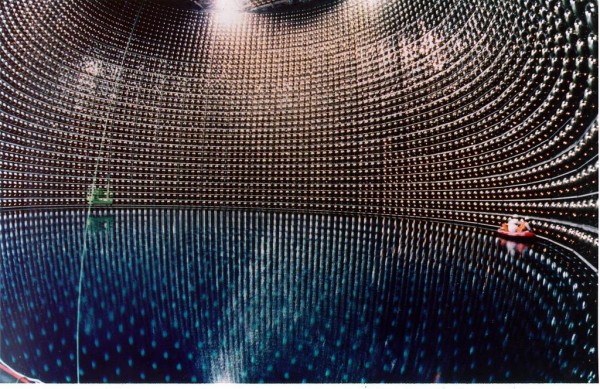
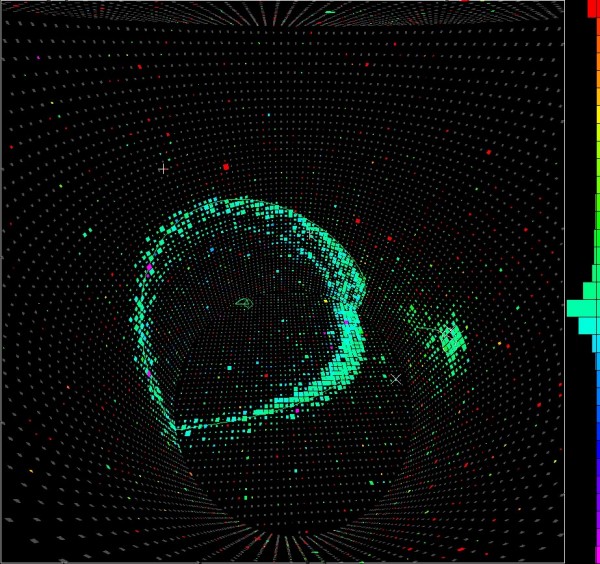


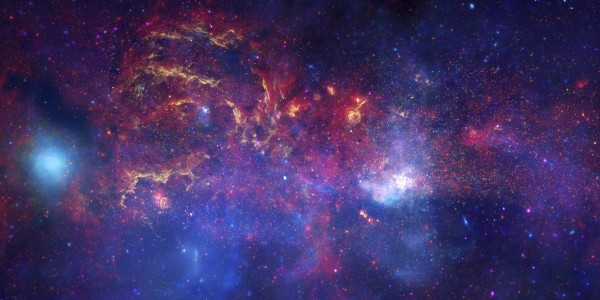
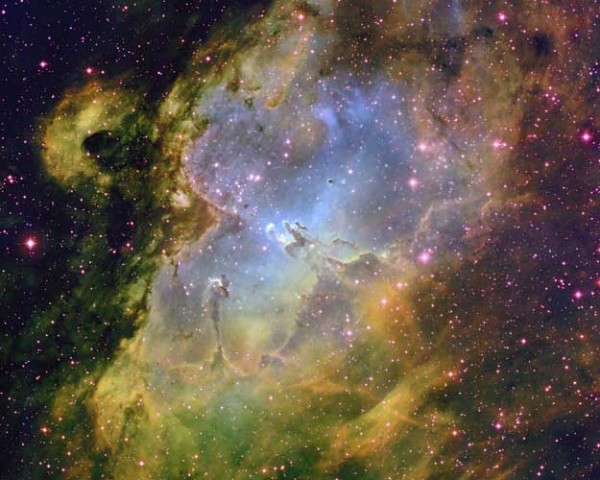

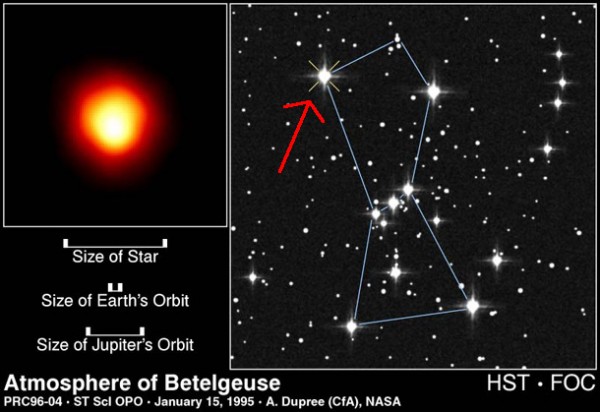
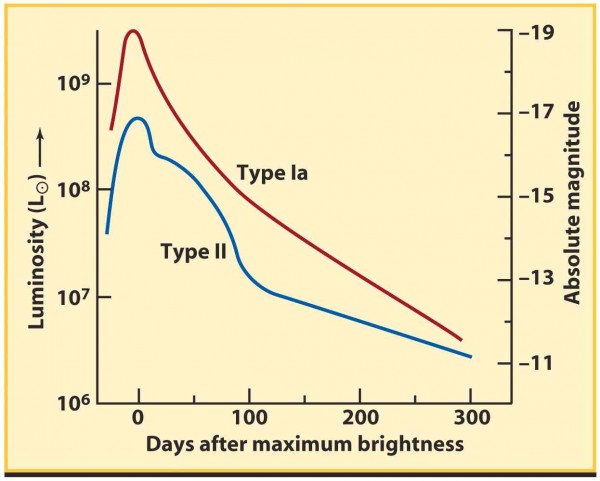
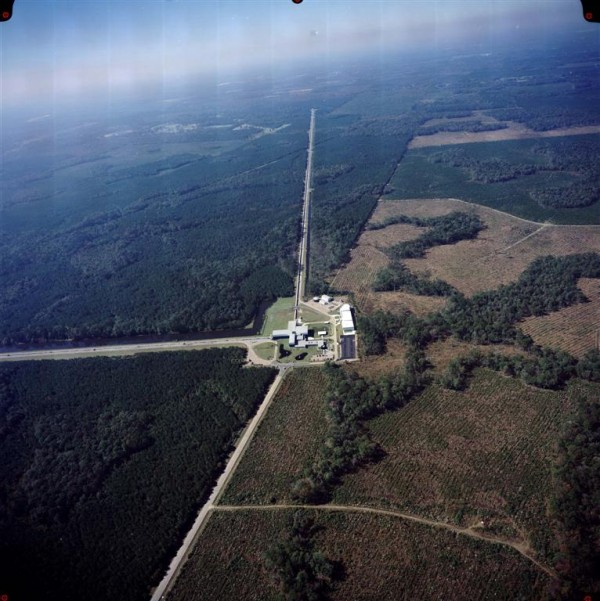
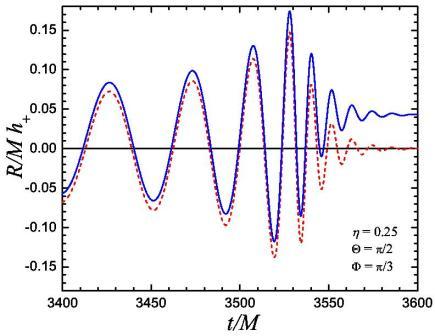
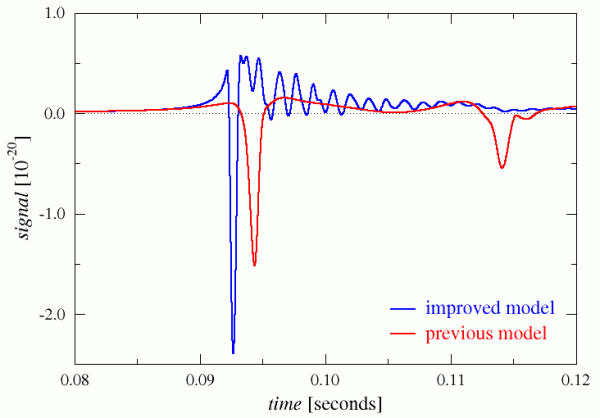
Except that LIGO is currently off-line, since it is under construction into the more sensitive Advanced LIGO! Only the smaller GEO detector in Hanford, Germany is running right now in "astrowatch" mode, just in case of such a local eventuality. So, dear galactic supernovae, please hold off a few more years...
Thanks for a great post. I love it that these things for all the world make a kind of gong sound all their own and that there are two kinds of gong.
1/26/12 9:02 PM EST
I am in the Caymen Islands and 40 +/- mins ago I saw a high altitude, round, star white explosion â size = 1 â 1.5 times the diameter of venus tonight, duration = aprox 1/4 â 1/3 sec. Location 2/5 of the distance on a line between the Pleides and Betelgeuse.
Does anyone have any idea what this might have been?
@erikyoung: Possibly an irridium flare http://en.wikipedia.org/wiki/Iridium_flare
Hello Ethan,
I'm a sci-fi writer and reader.
I just once read a Gérard Klein short story about a civilization like ours dying suddenly because of an unavoidable lethal supernova and I always was curious about the real power of stars upon their neighbours.
If Betelgeuse went supernova, would we receive at some point in the timeline a significant energy shower? and with how much delay? what would be the effect?
Would the oceans be heated by the neutrinos? would the planet be heated? by how much?
Similarly, if our galactic core center had a jet about to be reaching us, how much time would we had between detection / prediction and the moment we are showered by the significant peaks of energy?
Cheers
Hi Ethan,
if actually light were emitted hours later than neutrinos, this would imply that the star's hull itself does not change for these hours. How does this match?
Cheers.
Okay, an interesting question. Firstly, don't worry too much about the neutrinos. If they can escape from the centre of a large exploding star without interacting too much with the outer layers then they can pass through the Earth, oceans and all, without depositing too much energy.
But, well, if the eventual Betelgeusian supernova converted all of the mass of the star in to energy and the distribution was a simple sphere, the energy deposition on Earth would be a staggering 1*10^10 Joules per square meter. If I've got my maths right. Which would, if delivered quickly, vaporise the planet. Oh, no, we're all doomed!
Well, okay, no we're not. Firstly, the supernova isn't nearly that efficient and much of the energy is in the neutrinos, which aren't a particular problem. So, lets say 10% of the mass is converted in to some sort of energy we need to worry about. We're down to 10^9 already. Then note that even if all of this energy is concentrated in to particles moving between .9c and c, then the energy is going to arrive over a period of 71 years. Which makes the power density about 0.3 Watts per square meter. In comparison, that's about a thousandth of mean solar irradiance on the Earth's surface (and a four thousandth of peak sunlight in the tropics.) So, even on my dubious assumptions, it's not going to boil the oceans or vaporise the land.
But, obviously, charged particles may interfere with satellite TV etc ...
Ethan
How do we distinguish between a neutrino emitted two hours before the start of an observable change to a star, and a faster-than-light neutrino that takes two hours less to get here?
@SCHWAR_A
Stars are opaque to photons but transparent to neutrinos. Ordinarily it may take millions of years for fusion-released energy to reach the surface of the star from which it can finally escape. In a supernova, it still takes a few hours for the light to blow the star apart.
@David L
Multiple observations at different distances. If the photon-neutrino delay varies proportional to distance, it's the particles in flight; if it's constant, it's the physics in the star. AIUI, SN1987a is our only good data point, but even a single new observation should answer the question.
David,
If you only have one supernova, you can't. But if you get a 2 hour delay from one at a few thousand light years and a similar delay from one at a much longer distance (and for SN1987a it was 186,000 light years), then the difference appears to be due to the production mechanism rather than transit.
For the SN1987a detection, any superluminal speed would have been a trivial fraction of the speed of light (about one 800 millionth). This is about 4000 times less than the OPERA anomaly.
Note: Tommaso Dorigo reported the SN1987a limit is an order of magnitude stronger than "four part in ten billionths". Which, I think, means a limit 30 times tighter than I have calculated from the simplistic "2 hours in 186000 light years". He's much more likely to be right than me :)
First, some of the hazards associated with nearby SNe are described at
http://stupendous.rit.edu/richmond/answers/snrisks.txt
Second, I don't quite understand the statement that if Betelgeuse were to go supernova, we would detect 100 million (anti-)neutrinos. Let's see: Betelgeuse is at roughly 200 pc, vs. 50,000 pc for SN 1987A. If both events produce the same number of neutrinos, the inverse-square law predicts that we ought to see about 62,000 times as many events from Betelgeuse. So, 30 x 62,000 = 2 million, roughly.
The new Super-K detector has about 15 times as much water as the one which was active in 1987. If the detection probability scales as the mass of water, than we might expect (2 million)*15 = 30 million neutrinos to be detected.
That's 30 million, not 100 million. Is there a factor of 3 I'm missing?
Of course, given our knowledge of the details of the SN explosion process, there are probably factors of 10-100 either way, so 30 million vs. 100 million doesn't really matter.
Michael,
According to your page, without correcting for the fact that Betelgeuse would be a Type II not a Type I supernova, you reckon it is well within the lethal zone for an astronaut ("300pc or closer" versus approximately 200pc in this case)?
@Lurker #753 (9) & Ethan:
"Ordinarily it may take millions of years for fusion-released energy to reach the surface of the star from which it can finally escape. In a supernova, it still takes a few hours for the light to blow the star apart."
The problem is not the photons to reach the surface.
What I addressed is the visible change of the surface during the explosion.
With your statement the supernova starts with its ignition - with very much neutrinos - then for about 3 hours no neutrinos are generated and the explosion propagates to the surface where finally a change can be visually detected by emitting much more photons.
Is the supernova explosion model actually like this to match with the 3 hours? Are there really about 3 hours between its ignition and the reaction at its surface?
Cheers.
There was a story in Galaxy or Analog about 50 years ago about how the Martians became extinct because of how the sudden appearance of Tycho's Star played into their astro-mythology. The Sleeper Awakes! I think it was called "The Clutch of Old Grabby" and I recall it being really funny. But I can't find it on the 'net, what's up with that???
@SCHWAR_A #13
It really would take 3 hours. Remember Betelgeuse is very big. At the speed of light, it would take over an hour to go from the core to the surface.
Your statement is accurate. Betelgeuse going SN would be a risk of some level to an unshielded human in space ... but very likely not a "you'll die within minutes" sort of risk. Maybe a "you may have a larger chance of suffering cancer in months/years", or possibly "you may get sick within weeks."
Happy new year!
@Sinthetic (15):
Due to the essential formalism
_
ν_eâ¾ + p+ â n0 + e+
the transformation of most protons into neutrons occur together with the neutrino emission.
Thus the sun's surface changes at the same time when the neutrinos pass its border zone, with a "tsunami" duration time about 15s measured with SN1987a.
With this model the start time is the same for photons and neutrinos.
The measured neutrino emission duration time of about 15s could due to the inner SN1987a-progenitor-core of about 6 sun-radii?
On a posts like this one, I normally don't comment; I just learn. I reread the post and comments, cross check various ideas discussed and also my brainstroms, I follow the links and so on.
I especially appreciate some of the peripheral ideas like, "White dwarfs are simply too abundant, and the locations of almost all of them are simply unknown, and thought to be distributed all over the galaxy." Wow, there is so much we don't know. Or, "a supernova within our galaxy would likely be the very first detectable observation for the newest type of astronomy: Gravitational-Wave Astronomy!" Now this gives me pause; what if we have no supernova in the Milky Way for a few hundred years. Then what will gravitational wave astronomy observe? Nothing? One wiki answer is "Space-based detectors like LISA should detect objects such as binaries consisting of two White Dwarfs." OK nice. And thus I daisy chain through the ideas of this post and learn what I can learn.
Thanks for the education.
Last night Jan 27th around 10:30pm from Tampa,FL I seen a white round explosion. lasted for maybe a second. Popped in right above betelgeuse and vanished. It was relatively massive. 2-4 times bigger than anything else in the sky. The light came from the inside out then back in with a slight Ying Yang sign like fade/disappearance.
Damizan,
Then it wasn't a supernova or another macro-level event. The sheer masses and energy involved mean that they last for considerably longer.
It was probably have been a reflection off a near-space object - an Iridium flare or even the ISS (I'll admit I haven't checked the ISS track data to see if it was visible from Tampa at that time, never mind in the direction of Betelgeuse.) It might even have been a meteorite (although this is much less likely.)
'we would expect Super Kamiokande-III to see anywhere from a few thousand antineutrinos (for something on the other side of the galaxy) to over ten million of them,...'
Is the detector mostly sensitive to antineutrinos or are antineutrinos the primary neutrino type genereated in super novas? If the last is true, does this imply that gravitational collaps converts matter into anti matter?
Sorry to be a meanie, particularly in regards to an excellent post, but I don't think the following is correct:
"Remember, now, there are two ways we can have a supernova, but both ways involve a runaway nuclear fusion reaction"
Type Ia is certainly a runaway nuclear reaction. The energy for a type II comes from gravitational collapse - not a runaway fusion reaction. Of course there is also the pair-instability supernova, a rare beast created from super massive stars. That is fusion energy again, but these are very rare.
thanks because i know many concept in your blog _____ but the problem is are u a creationist or evolutionist?do u believe in GOD.....?
Tom,
As none of the professionals appear to have popped in to answer ...
We are not yet sure that there is actually any difference between neutrinos and anti-neutrinos.
If there is, then yes, anti-neutrinos would be the primary type produced in the initial stages of a supernova. This is merely because the first hypothesised neutrino (although Pauli called it a neutron then) was to explain the observed problems with beta- decay. There you have a neutron decaying to a proton, electron and an electron-neutrino (although Pauli was dealing with atomic nuclei, the neutron being a couple of years away from discovery.)
In a supernova, we are considering protons and electrons being crushed together to produce neutrons and, by symmetry, anti-neutrinos. Neutrinos produced by particle interactions in the high density / temperature environment or by bremsstrahlung emission are likely to be produced in 'pro' (? sorry, 'normal' isn't right either :( ) and 'anti' pairs.
But just remember that the difference between matter and anti-matter is essentially artificial. So there are not two diametrically opposed "states" for there to be any "conversion" between.
I hope I've got this right ...
who cares?
its quite clear to know about the super nova. how offen the super nova occur. i want to know more about the happening in and around our galaxy. please help me, anyone. thanks.
Michael Richmond,
I think the 100 million number is coming from counting detectors other than Super-K also. There are a lot more neutrino detectors now than there were in 1987, and Super-K isn't the only one that is much larger. Also, some of these detectors are able to detect a larger variety of neutrinos.
What about energy deposition into stars "near" Betelgeuse? Maybe even catalyze some state? Could a white dwarf near the mass limit be kicked into supernova by a deposition of energy? I know the primary limit of white dwarfs is mass but the point is to have enough heat to fuse helium. Granted the star could just inflate a bit...
When Eta Carina goes there could be interesting affects on nearby Wolf-Rayet type stars....
i would like to know more about super nova and i have lots questions about it. please guide me!!!